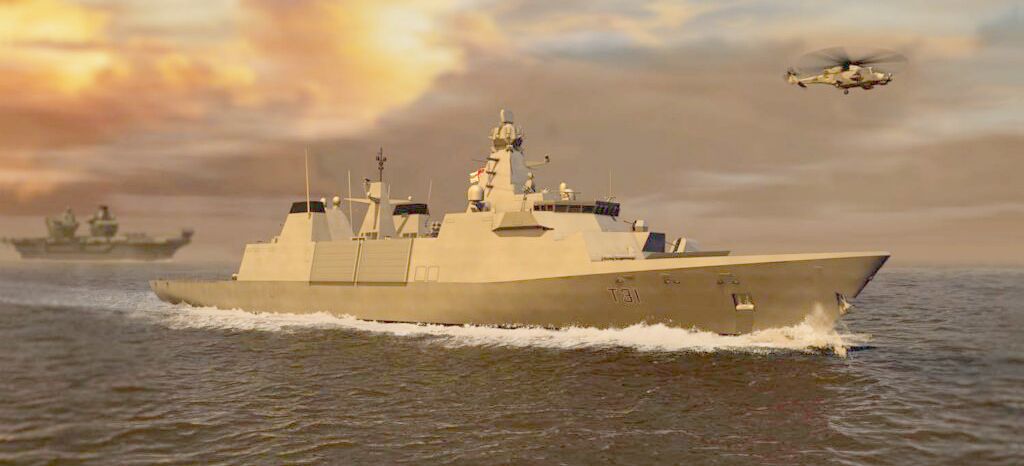DSEI 2023: Royal Navy To Set Up In Receive Mode, To Support Partnering Against Future Threats
- News Article
- Naval
- Future tech
- DSEI

The UK Royal Navy (RN) will have significant presence at the DSEI 2023 exhibition, which is taking place at ExCeL London on 12-15 September. It is also seeking to grasp the engagement opportunity that the exhibition will present.
The RN’s Type 23 frigate HMS Iron Duke and two P2000 Archer-class patrol craft will be present on the waterfront. During the conference discussion panels, the RN presence will be led by First Sea Lord and Chief of Naval Staff Admiral Sir Ben Key and will include, amongst others, Rear Admiral Paul Beattie (Director Naval Staff), Rear Admiral Andrew Betton (Director Joint Warfare, UK Strategic Command), Rear Admiral James Parkin (the RN’s Director Develop), Rear Admiral Nick Washer (Director Operations, Defence Digital), and Brigadier Jaimie Roylance (the Navy’s Chief Technology Officer).
In an interview for Naval News on 24 August, Rear Adm Parkin commented: "In terms of capability development, DSEI 2023 will enable the RN to engage with partners – from other services and other countries, and from defence and other industry sectors – in a focused manner."
As Director Develop, Rear Adm Parkin explained: “My remit is ‘the navy after next’. DSEI is often about looking forward,” he continued. “So, it’s as much of an opportunity for me to be on ‘receive and discuss’ mode as it is to be on ‘transmit’.
Due to the presence of many suppliers and other partners in the same place at the same time, I can get a huge amount of learning and understanding, as can my team, from talking to people in one place – and sometimes joining the dots between different organisations, different companies, different countries – because everyone’s in the same one-mile by half-a-mile space.”
Rear Adm Parkin also assessed that DSEI discussions will demonstrate a sea change in how the navy buys its equipment. “I think what you’ll see from those conversations, presentations, and [from] the exhibits our commercial partners are displaying, is an understanding that we’ve turned a corner in the last couple of years on how we think about acquisition.”
He cited two examples:
Naval Strike Missiles

The deck equipment of the Harpoon launchers is being removed from HMS Somerset ahead of NSM installation (Credit: HMS Somerset)
First, the RN will be fitting the Kongsberg/Raytheon Naval Strike Missile (NSM) onboard its Type 23 frigates and Type 45 destroyers, providing a transitional capability between the in-service Boeing Harpoon anti-ship missile and the RN’s planned future offensive surface weapon (FOSW). As well as bringing an ‘order-of-magnitude’ capability improvement – especially in survivability and land attack – Rear Adm Parkin noted that the programme to replace Harpoon with NSM was put in place in less than 12 months, with NSM also set to come into service before Harpoon goes out.
Mk 41 VLS

Artist impression of a Type 31 frigate as part of a CSG. Royal Navy image.
Second, the navy will be fitting the Lockheed Martin Mk 41 vertical launching system (VLS) into its Type 31 Inspiration-class general-purpose frigates, the first of which (Venturer) is in build.
“The Type 31 was specifically built with an adaptability pathway so that it was always going to have the ability to put Mk 41 in should we see that the threat envisaged it. That flexibility has enabled the navy to respond to the threat as needed.”
Rear Admiral James Parkin, the RN’s Director Develop
To maintain Type 31’s build schedule, Mk 41 VLS fits can be installed during subsequent capability insertion periods, Rear Adm Parkin noted.
“I think what those two examples demonstrate is that we’re a listening organisation, we’re a learning organisation,” Rear Adm Parkin continued, noting that the RN’s evolving acquisition approaches are part of a wider RN focus on ensuring new platforms – especially surface ships – will bring improved lethality over their predecessors. Moreover, he explained, Type 45 will remain in service for at least another 15 years, and Type 31 and the new Type 26 anti-submarine warfare frigates will be operational for many decades to come. Thus, rather than focusing on multi-billion-pound future platforms that are almost too exquisite to envisage developing, the RN is focused on “a ‘plug-and-play’ approach that will still be world-beating, but allows us to upgrade at the speed of relevance, not at the speed of traditional defence procurement cycles”, said Rear Adm Parkin.
Secured your pass for DSEI?
-
Latest Defence and Security Capabilities set to be on Display in London as DSEI 2023 Begins
12 Sep 2023Defence and Security Equipment International 2023 (DSEI) opened its doors Tuesday 12th September. DSEI 2023 and DSEI Connect will together host some 1,500 defence and security suppliers – including al ... -
Unlocking the Defence Workforce Ecosystem
05 Sep 2023The UK MOD is facing unprecedented challenges in attracting, growing, and retaining the skills it needs to deliver its mission. The new systems and technologies that the UK is fielding add to this cha ... -
KEY POINTS Rapid modernisation, innovation and technical development is needed for the UK to meet it’s twin priorities of protecting European allies, and stability in the Indo-Pacific. Using innovatio ...
-
Agile Acquisition & Rapid Delivery in Defence – Resilient Teams Harnessing Digital Means
04 Sep 2023“Technology is an extension of human behaviour” – a quote attributed variously, but traceable to the Canadian philosopher, Herbert Marshall McLuhan. Whilst originally referencing the study of media, t ... -
“Nobody ever stops or intervenes in a poor project soon enough. The temptation is always to ignore or under-report warning signs and give more time for things to improve to avoid revealing bad news, r ...
-
Understanding space: DSEI and UK Space Command
01 Sep 2023 John HillIn March this year, the European Space Agency (ESA) stressed the importance of space as a disruptive force in society and defence in its space strategy report, ‘Revolution Space’. “Countries… that wi ...

-038.jpg/fit-in/500x500/filters:no_upscale())
)
)
)
)
)

